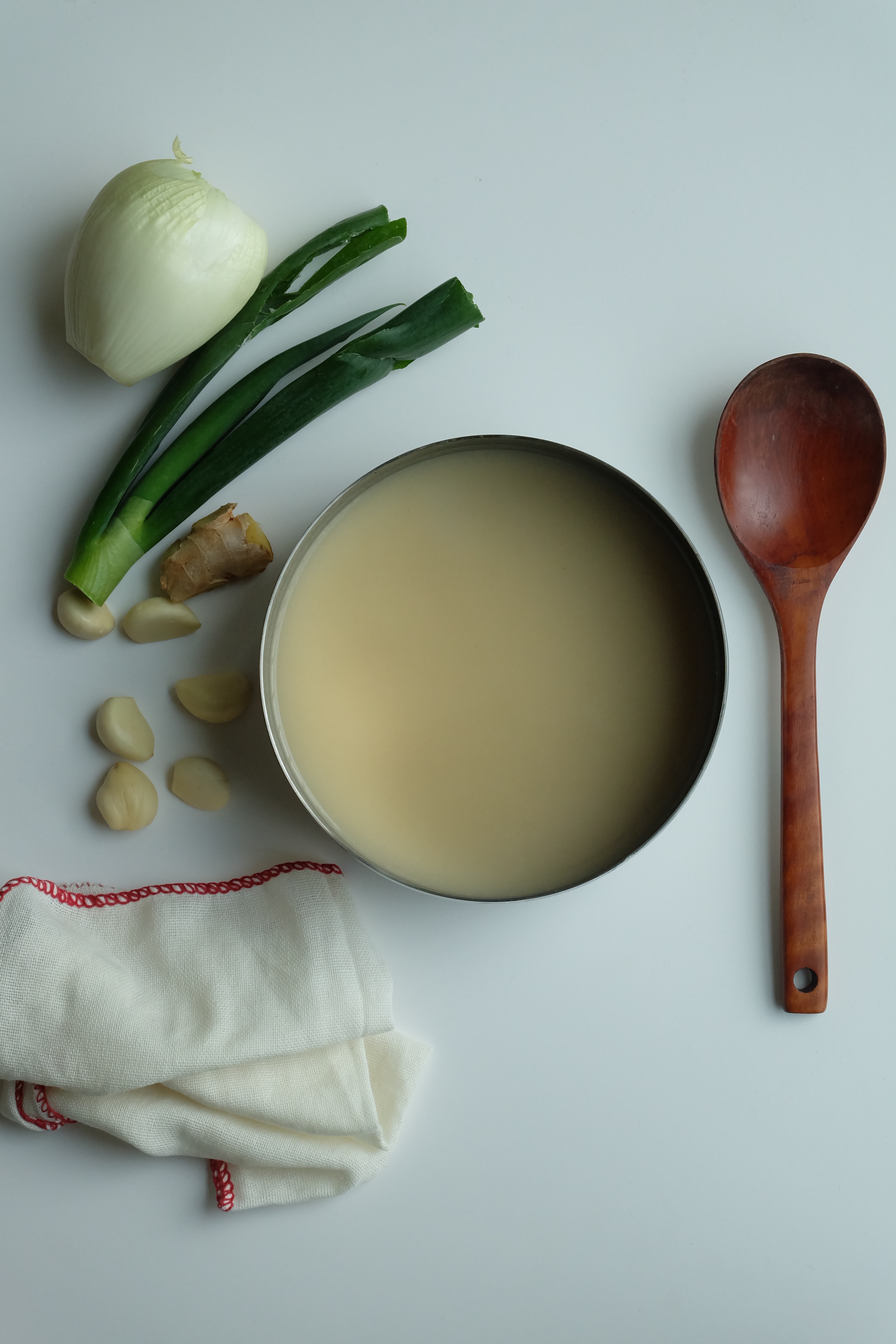Kitchen Stories: Oritang and Pig’s Feet Soup

Cho Yeong-ja follows her two granddaughters, Suji and Sora, as they burst into their apartment still wound up from their day at school. Cho, 58, balances into a deep practiced squat while simultaneously helping the girls remove their backpacks and plying them with tiny seaweed rice cakes dipped in barley syrup. As the children breathlessly chatter about their day, she replies with a playful gasp and laughter. When Cho was a child, she walked for an hour to get to school. She grew up in a large family in the rural village of Gokseong (곡성) in Jeollanam-do. She married at age 30, later than normal for girls at that time, and had one son, Sungje.
Some of her fondest memories are of cooking oritang (오리탕, duck stew) for her family.
“Making oritang is not that easy,” says Cho. “It demands a lot of energy and time, but when I watched my whole family having this stew together, I could tell that it was their favorite. Another reason [why I like making oritang] is that people can easily buy chicken, pork, or beef, but duck is a little rarer and more special.”
She explains that stews, such as oritang, allow for a tremendous amount of variation based on region and a family’s specific taste.
“Oritang is generally a clear soup, but I like to cook it my way, South Jeolla style,” says Cho. “I buy duck with its bone and flesh separated from the beginning. I ask the butcher to debone the duck, so that I can use the bones separately to make the soup thicker. If you boil the duck bones slowly for a long time and then add the duck meat later, your soup will taste better. That’s a real soup! To me, [boiling the bones] is the most difficult part of the recipe but a necessary part. Then you add the other ingredients – vegetables, soybean paste, and sesame seed powder, and boil them. It is a dish that shows great love and care from a mother to her family.”
Though she is just visiting her son’s family, Cho is busy at the sink washing dishes. Today she has the day off from her job as a caretaker in a hospital. After years working as a housewife, the job is a recent and fulfilling career move. Just as she finishes scrubbing the last dish in the sink, Sora, her youngest grandchild, offers her a cup of imaginary tea from her tea set. Cho accepts with a laugh. She’s ready for a break.

Gelatinous Pig’s Feet Bone Broth Soup 돼지 족발탕
Although Cho’s family enjoys her oritang, she wanted to share this unique recipe for pig’s feet soup. This soup is not only nutritious but is also known as an excellent way to promote milk production in mothers struggling with breastfeeding. For a month following the birth of each of her grandchildren, Cho cared for her daughter-in-law with this delicious soup.
Ingredients
1 set of pig’s feet (2 back feet, 2 front feet), 1 yellow onion, 1 ginger root, 1 green onion stalk, 5 peeled garlic cloves
Cooking Method
If possible, cut the pig’s feet into smaller chunks. Soak the pig’s feet in cold water for approximately 4 hours. Check periodically and change the water until there is no blood left in the water.
Put the feet in a pot and pour in 1.8 liters of water. Then place the yellow onion, ginger, green onion, and cloves into a muslin herb sachet, and put the sachet into the pot. Bring the water to a boil on high heat. Once the water is boiling, reduce the water to medium heat and continue to simmer for 2 hours.
After 2 hours, pour the broth into another pot and add more water. Simmer for another 2 hours. Repeat this process again 3 more times. When the broth begins to thicken, boil on high heat. Once the broth begins to boil, turn off the heat. Remove bones and fat, and discard. Remove cartilage and pack into a firm disc.
Season the soup with salt. Add Korean leeks and black pepper to taste.
Note: When warm, the soup will have a creamy, slightly tacky texture. After being cooled in the refrigerator, the texture will become gelatinous.







